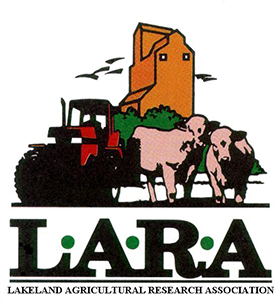Sainfoin: bloat-safe legume
It is well known that inclusion of legume crops improves the protein content and digestibility of your forage stand resulting in improved overall quality of livestock feed whether utilized as hay, silage or pasture. The most commonly utilized legume crop in Western Canada is alfalfa due to its wide adaptability and high yield. However, the use of alfalfa in pastures for grazing cattle raises concerns as a result of increased risk of bloat. To help minimize this risk, there are multiple alternative legume varieties that are considered bloat-safe – one of which is sainfoin.
Although sainfoin is a bloat-safe legume, it has had very limited use within Alberta due to two primary agronomic characteristics: poor to fair longevity and low tolerance to grazing. Sainfoin is not a competitive plant and continuous grazing can result in domination by other forage species. To help sustain stands for multiple years, it is suggested to harvest only once per year, if utilized for hay, followed by late season grazing. If the stand is solely for grazing, a rotational system needs to be used due to preferential selection by livestock. Sainfoin longevity can be improved by allowing self-seeding of established stands, letting older plants to be replaced by new seedlings.
Sainfoin is very palatable in the early growth stages with good leaf retention and yields comparable to alfalfa. The deep taproot makes it highly drought tolerant and the ability of sainfoin to fix nitrogen can boost soil fertility. Once active growth has ended in the fall, sainfoin regrowth can be grazed late in the season.
The bloat-safe characteristic of sainfoin make it an ideal legume for inclusion in pasture stands intended for grazing. Recent research has focused on determining pasture productivity/longevity and cattle performance on alfalfa/sainfoin mixtures in pasture. Results from the Lethbridge Research Center indicate that the higher the inclusion rate of sainfoin in the stand, the lower the incidence of bloat in cattle and average daily gains are comparable between sainfoin and sainfoin/alfalfa stands.
Through appropriate management, sainfoin stands can be maintained for many years and successful utilization of the forage has been increasing in southern Alberta.
In 2014, LARA established a three year sainfoin project assessing the suitability of the forage to establishment and stand persistence in the Lakeland. Previous research at LARA has shown sainfoin to yield an average of 3357 DM ton/acre.
To read the full results from 2014-2016, Click Here.
To read more about Perennial Forage, Click here
Resources
Acharya, S.N. Forage Research at Lethbridge Research Centre. CFGA Conference, Olds, Alberta. 2013.
Alberta Forage Manual, 2nd Edition, Alberta Agriculture 2009.
Sainfoin for Western Canada. Foragebeef.ca. 2012.

